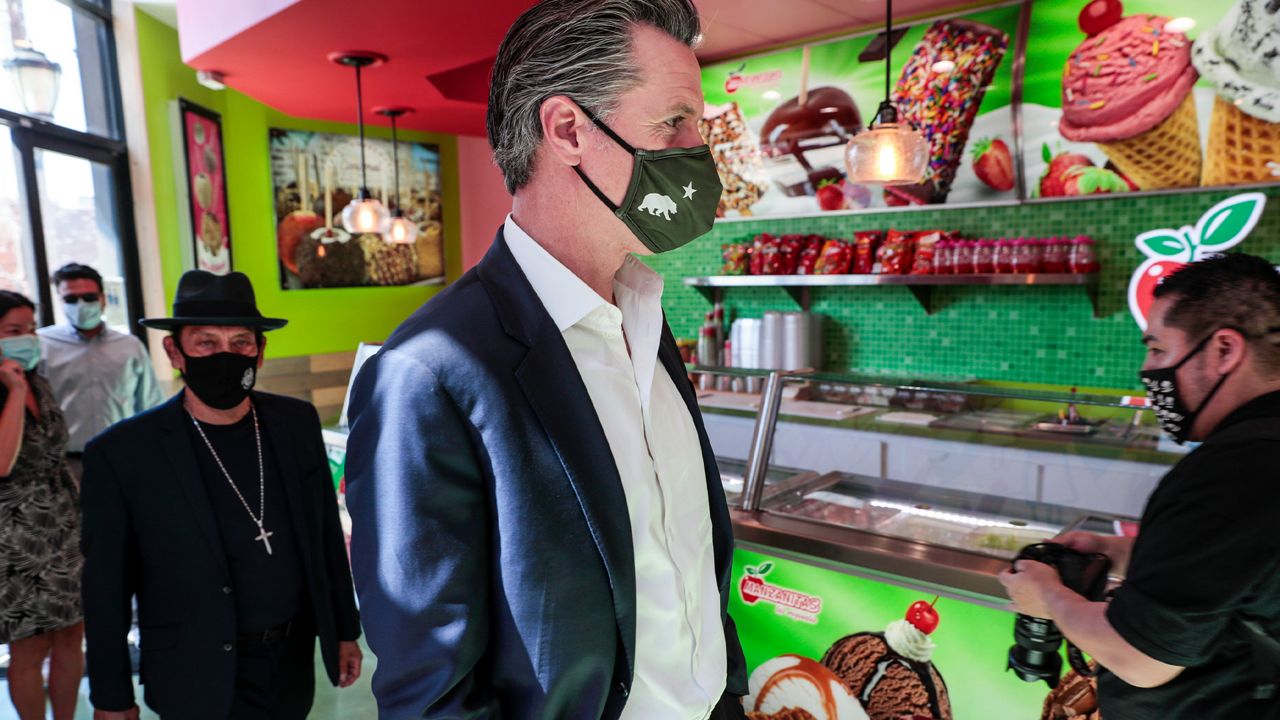California Gov. Gavin Newsom previewed his $100 billion economic recovery plan Monday for the Golden State.
Dubbed the "California Comeback Plan," the proposal is the biggest economic recovery package in state history and would provide nearly $12 billion in direct payments to those most impacted by the pandemic.
Under his plan, roughly 11 million low- and middle-income Californians would see direct, one-time payments. Taxpayers making between $30,000 and $75,000 a year would get a $600 payment. Households making up to $75,000 with at least one child would get an extra $500 payment. It builds on an earlier payments to the lowest-income Californians and immigrants who pay taxes but did not get federal stimulus payments, including those living in the country illegally.
"Two thirds of all Californians will benefit from this stimulus," said Newsom, while delivering remarks at a news conference in the Bay Area.
The plan lays out strategies and investments to tackle five of what the governor's office has identified as the state's most pressing challenges. Topping that list is offering a means to provide immediate relief to those hardest hit by the pandemic.
During his address, which resembled a campaign stop for the governor who is embroiled in a recall effort, Newsom also revealed that California is sitting on a $75.7 billion budget surplus.
"Today we’re announcing a projected $75.7 budget surplus, it’s a remarkable turnaround," said Newsom.
The surplus will fund the lion's share of Newsom's proposed stimulus with the federal government providing an additional $26 billion.
Besides direct stimulus payments, the plan also calls for widespread rent relief and additional relief to help those impacted by the pandemic pay money owed on water, electricity and utilities.
Under Newsom's plan, the direct payments would total an estimated $8.1 billion, said H.D. Palmer, a finance spokesman. The proposal also includes $5.2 billion to help with back rent and future payments and $2 billion for overdue utility bills for people who fell behind during the pandemic, though Newsom's office provided few details.
"We’re very mindful that $600 is not enough," Newsom said. "That’s why today we’re announcing our desire our plan to double the amount of rental assistance in the state of California."
The plan would see California offer the largest renter assistance package of any state in America, with billions of dollars to help low-income Californians pay back 100% of their back-rent, along with overdue utility bills.
“California’s recovery is well underway, but we can’t be satisfied with simply going back to the way things were,” said Newsom in a statement that accompanied his address. “We are tripling the Golden State Stimulus to get money in the hands of more middle-class Californians who have been hit hard by this pandemic. Two in three Californians will receive a check from the state and more than $5 billion in aid will be made available to those who need help paying their rent or utility bills.”
Throughout the week, the governor is expected to highlight other key initiatives and investments included in the plan.
While Newsom was upbeat and optimistic about the state's prospects for recovery, he also emphasized that the pandemic was not yet over.
"California’s economic success our economic recovery is predicated on ending this pandemic," Newsom said. "This disease didn’t take mother’s day off, it’s not taking the summer off, it’s as deadly as it’s ever been."
California, once among the hardest hit states in the nation, is continuing to emerge from under the pandemic. With vaccinations ramping up statewide, Newsom has targeted a date of June 15 for fully reopening the state's economy.
The Associated Press contributed to this story.



